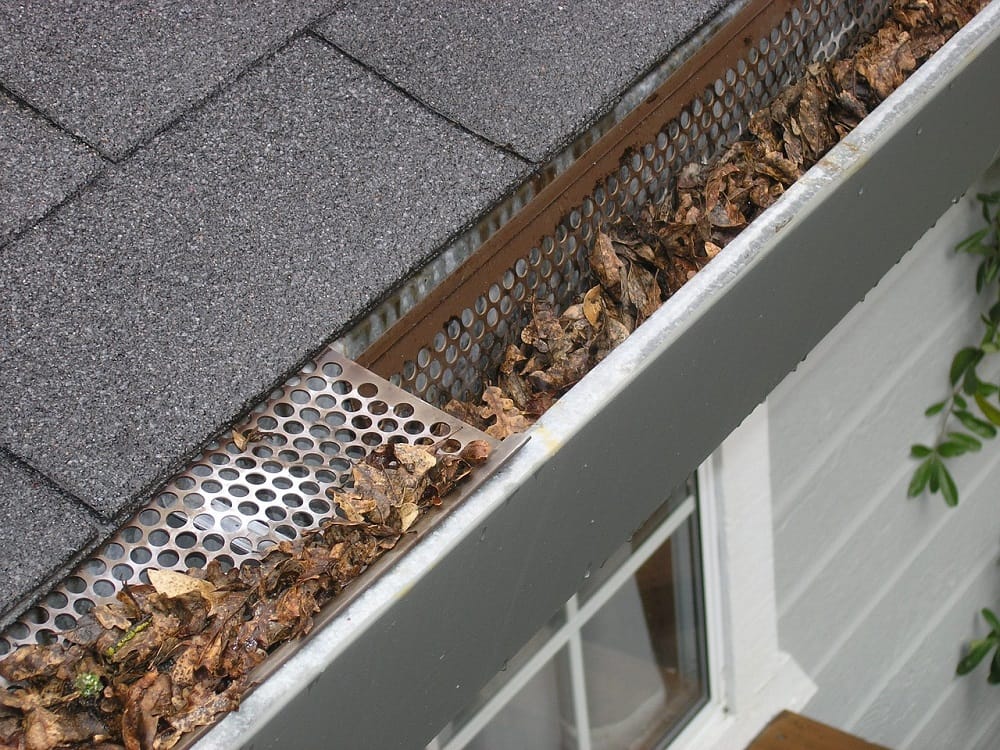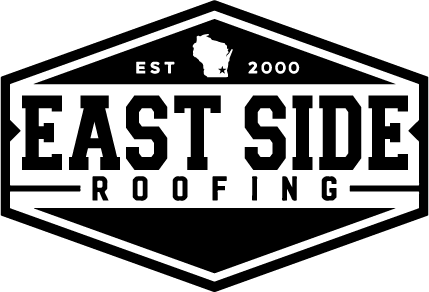Designed to block leaves, twigs, and other debris, gutter guards aim to ensure that water flows freely through your gutters, protecting your home from water damage and reducing the need for frequent cleaning. The common perception among homeowners is that once installed, gutter guards offer a hassle-free, one-time solution to gutter maintenance, eliminating the need for regular cleaning and ensuring peace of mind during heavy rainfalls. However, that isn’t always the case.
East Side Roofing is here to delve into the realities of gutter guard performance, offering you informed guidance and reliable services to ensure your home remains safe and well-maintained throughout the year.
What are Gutter Guards?
Gutter guards are protective devices designed to cover the gutter and prevent leaves, twigs, and other debris from entering, while allowing water to flow through and away from the home. These guards are integral components of home maintenance, aimed at reducing the frequency and difficulty of gutter cleaning, and preventing clogs that can lead to water damage. By mitigating the risk of overflowing gutters, they protect the foundation, siding, and landscape of the home from water-related issues. Gutter guards are also intended to reduce the growth of mold and mildew by preventing organic matter from accumulating and decomposing in the gutters.
Common issues with gutter guards
They require maintenance
Despite their promise of reducing gutter maintenance, gutter guards are not completely maintenance-free. Over time, small particles of debris, such as pine needles, seeds, and shingle grit, can accumulate on or in the guards, potentially reducing water flow or even creating blockages. Regular inspection and cleaning are necessary to prevent these issues. Without periodic maintenance, gutter guards can lead to unforeseen problems, such as water overflow, increased strain on the gutter system, and even damage to the roof and home’s foundation.
They gather debris
Gutter guards accumulate leaves, twigs, and other debris, especially during heavy storms or in areas with abundant foliage. While these devices effectively block larger debris from entering the gutters, they can become a collection point for debris themselves. Leaves and twigs can pile up on top of the guard, especially on screen or mesh types, which can obstruct water flow and reduce the efficiency of the gutter system. This accumulation necessitates periodic cleaning to remove the debris layer and maintain the functionality of the gutter guards. If not addressed, the buildup on top of the guards can lead to water stagnation and overflow.
There’s a high risk of mold and algae growth
Mold and algae tend to thrive in moist conditions, and when debris accumulates on or under the guards, it retains moisture against the gutter system. Over time, this not only degrades the aesthetic appeal of the home but can also cause structural damage to the gutters and roof. The presence of these organisms can accelerate the corrosion of metal gutters, degrade roof materials, and lead to unsightly staining.
They put a strain on your roof
The addition of gutter guards can inadvertently put extra strain on roof structures, particularly when they become clogged with debris. The weight of accumulated leaves, twigs, and even snow or ice can significantly increase when gutter guards are in place, as they prevent this debris from easily washing out of the gutters. This extra weight can stress the gutter system and the points where it is attached to the roof, potentially leading to sagging or pulling away from the roofline.
They create ice blockage in the winter
Ice dams occur when snow melts on a warm roof, flows to the colder eaves, and refreezes, typically at the gutter line. Gutter guards can exacerbate this issue by trapping snow and ice on top of the gutter, preventing proper melting and drainage. As water continues to back up behind the ice dam, it can seep under roof shingles and into the home, causing substantial water damage to walls, ceilings, insulation, and other interior areas. Furthermore, the weight of the accumulated ice can strain both the gutters and the roof structure, increasing the risk of physical damage.
Reassessing the Value of Gutter Guards
Gutter guards, while they claim to offer certain benefits in terms of reducing debris accumulation, they tend to have a lot of drawbacks. These include the potential for still requiring maintenance, gathering debris on their surfaces, fostering mold and algae growth, straining roof structures, and contributing to ice dam formation in winter. These factors can lead to additional costs and efforts in the long run, negating some of the initial benefits of installing gutter guards. Therefore, it’s crucial for homeowners to thoroughly weigh the pros and cons of gutter guards, considering their specific environmental conditions and maintenance commitment.
East Side Roofing offers expert consultation services to help you make an informed decision about whether gutter guards are right for your home. Our team is equipped to provide professional installation and maintenance services, ensuring the health and longevity of your gutter system.
Contact East Side Roofing today to learn more about our gutter cleaning services.
Be sure to check us out on Facebook!
